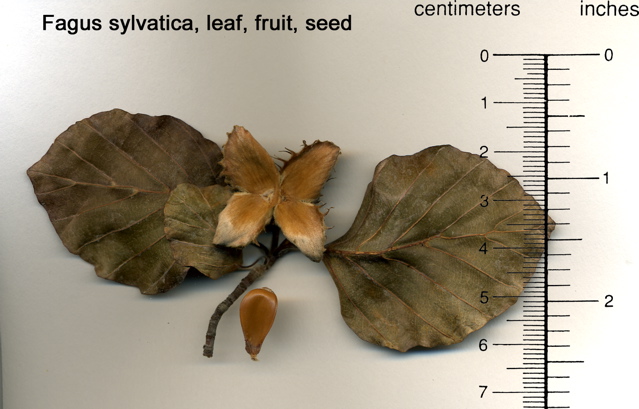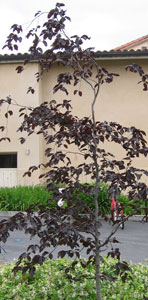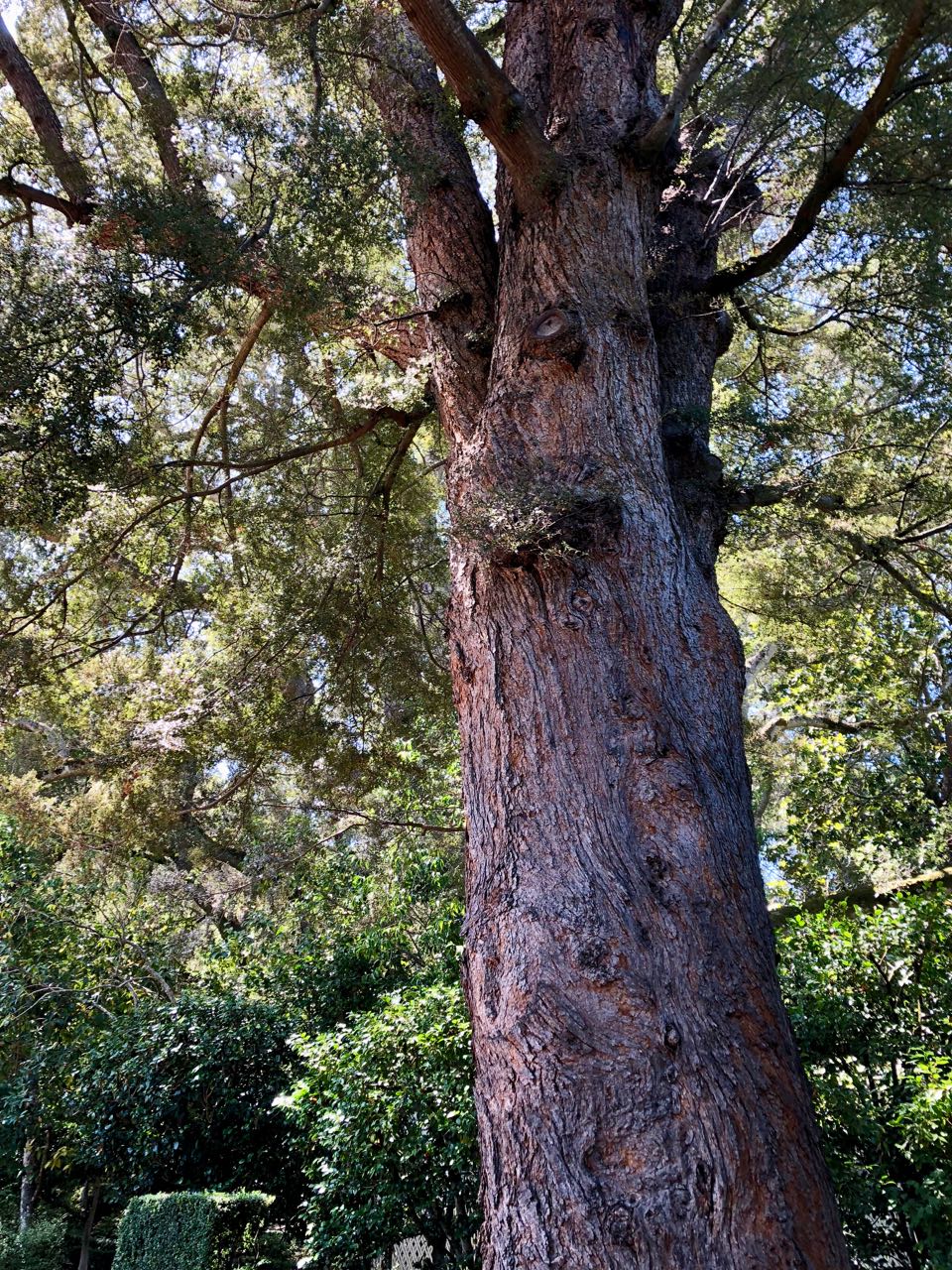Fagus sylvatica
 European beech
European beech
To trace the origin of the word “beech” is an exercise in Indo-European linguistics showing, surprisingly, that beech and Latin fagus are descended from the same root. Latin got the word from Greek phegos which, besides meaning the beech, meant edible, and sometimes meant oak. The place-name Buckingham refers to the beech forest. As you look at the beechnuts hanging in their burrs with the soft curly spikes, contemplate the beechnuts and acorns that were once the food of Europeans’ forefathers. Try one of the three-sided nuts. Beech mast is now food for pigs in Europe.
Those found on the inner slopes of Frost Amphitheater are copper beeches, a horticultural variety of the European beech. A vigorous young tree thrived in the lawn northwest of the intersection of Galvez and Escondido malls (map pin), with leaves just over 2 inches, some of them prickly, that turned dull brown in the fall. It was removed in 2017. Another copper beech was planted in 2006 in the circular planter at the head of Lasuen Mall near Braun Music Center; the ground cover is star jasmine.
Also see copper beech in Palo Alto at the Art Center, 1313 Newell Road near the Green Room entrance, and at 3756 Cass Way, visible in the backyard on the right side of the house. Of great interest on campus is a raised bed in the center of the small courtyard at the north end of the Education Building containing a pendulous dwarf purple beech ‘Purpurea Pendula’, with bright red fall color. Also of interest is the unusual young tree, variegated purple and pink, at 901 Mears Court.
The black beech of New Zealand, which has no ancestors in the temperate regions of the Southern Hemisphere, is cheerfully known as Nothofagus solandri (from Greek nothos meaning illegitimate). It goes back to the time before South America and Australia (also South Africa) parted company with the Antarctic continent, which was then not glaciated. The extensive black beech forests of New Zealand climb to the snow line and show rich winter color. Though the leaves are much the same as those of the northern beeches, they are not much more than ½ inch long. The tree should grow well in California, where calcareous soil can be avoided.
There is a fine specimen of N. solandri – the tallest in North America – in the walled garden at Filoli in Woodside, one of a pair brought to Filoli from the New Zealand Exhibit at the close of the Panama Pacific International Exposition in 1915. Its companion was stricken by oak root fungus and removed; the young replacement you see was grown from the seed of one of the two originals. (While there observe the formidable 20-tree copper beech hedge near the knot garden.) Other related species are in New Zealand, and more in Australia and Chile.
In Roman times, the North European barbarians were writing in runes on beechen “tablets” and it is thought that the English word “book” traces back to this practice; the German Büche for beech and Buch for book have a closer resemblance, while Old English bōc stood for both. It is striking that the trees along the back tier of Frost Amphitheater on which inscriptions have been inflicted are the beech trees.
About this Entry: The main text of this entry is from the book Trees of Stanford and Environs, by Ronald Bracewell, published 2005. Braun Music location added by John Rawlings (c. 2006). Additional notes on the Filoli Nothofagus (ref: L. Tolmach, Garden Room Descriptions, Filoli) and copper beech hedge, removal of Galvez/Escondido specimen noted by Sairus Patel Aug 2018.






